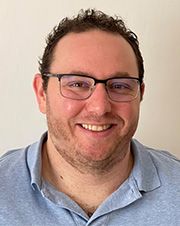Applications of fiber-optic sensing to borehole seismology
OR
Format: Virtual Webinar. 45 min. presentation followed by 15 min. Q&A
An optional post-lecture workshop will immediately follow each lecture for expanded Q&A and networking
Session 1, Thursday, Sept. 15, 2022, 9 am to 10 am Israeli Daylight Time
Session 2, Wednesday, Nov. 16, 2022, 10 am to 11 am Central Africa Time
SEG Members Free Access Details
Two live sessions are completed. Please scroll down to watch the videos from the recordings below. SEG members, view the course for free!
Abstract
Distributed Acoustic Sensing (DAS) is an emerging technology that leverages optical fibers to record the seismic wavefield with an unprecedented spatial resolution. In this talk, I will describe various seismic-band applications utilizing optical fibers deployed in boreholes. We first illustrate how records from a vertical DAS array can be simply and effectively processed to construct velocity models, detect microseismic events and earthquakes, locate them, and estimate their magnitude. Then, we show how a horizontal DAS array deployed in an unconventional shale reservoir records guided waves propagating for hundreds of meters with frequencies as high as 700 Hz. Thanks to the high resolution of DAS measurements, guided waves are recorded unaliased despite their very short (< 10 m) wavelength. We compare the field observations with semi-analytical and wave-equation modeling approaches. Guided waves are also strongly affected by open fractures induced by hydraulic stimulation. We use a horizontal cross-well acquisition of perforation shots recorded by a DAS array in a simple, geometrical analysis of horizontal fracture growth. We also analyze guided waves generated by microseismic events and can locate the events despite the unidirectional nature of the DAS measurements.

Your Instructor

Ariel Lellouch has recently joined the Department of Geophysics and Planetary Sciences at Tel Aviv University as an assistant professor, following a postdoctoral fellowship at the Stanford Exploration Project (SEP). He received his PhD and Masters of Science in Geophysics from Tel Aviv University, after a Bachelor of Science in Physics and Mathematics from the Hebrew University in Jerusalem. His research group focuses on various applications of fiber-optic seismology (DAS), from near-surface imaging to seismological studies of the Dead Sea Fault, through traffic monitoring in urban environments. He was awarded Honorable Mentions for the best paper presented at the SEG annual meeting (2019) and best paper in The Leading Edge (2020). He was nominated as the SEG Middle East & Africa Honorary Lecturer for 2022.
